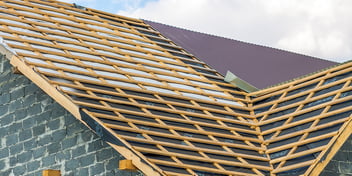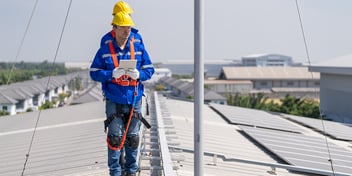- Home »
- Learningcenter »
- Roof underlayment types comparison
Roof Underlayment Guide: Types, Comparison, Tips, and More
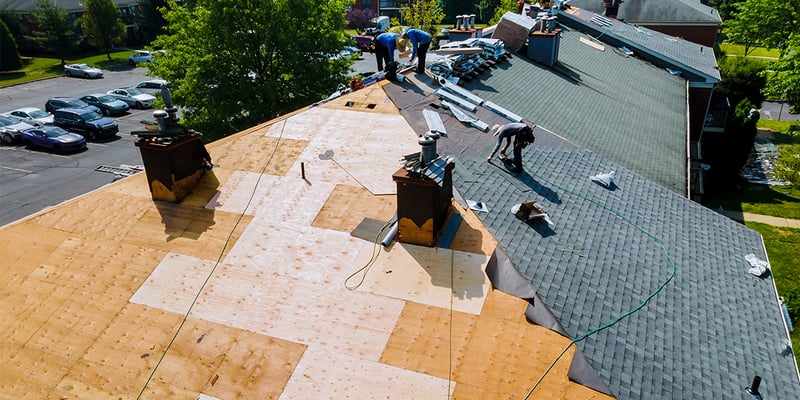
When you think about replacing your roof, one of the first things that come to mind is what type of asphalt shingles would be the best choice for your home. Your shingles aren’t the only component of your roofing system that need to be replaced periodically based on the condition of the roof, though– roof underlayment is another essential component that you’ll need to consider when choosing your roofing materials.
Asphalt-saturated felt underlayment was the standard type of underlayment for asphalt roofs for many decades. While this remains a cost-effective option for many homeowners, newer synthetic underlayments offer a number of benefits worth exploring. Additionally, there is another option homeowners can consider– particularly if they live in a climate with extreme temperature changes throughout the year– in the form of rubberized asphalt underlayment.
Don’t worry; you don’t have to become a roofing expert to hire someone to replace your roof. If you shop around for a reputable and knowledgeable contractor, they will help you understand your options and the budget required for each type of underlayment.
At the same time, it doesn’t hurt to learn a little more about the pros and cons of the three primary types of underlayment to help you make an educated decision that will best fit your budget and protect your home. Stick with us while we explore what you need to know about roofing underlayment.
What Is Roof Underlayment?
Before shingles are attached to your roof, but after the decking is put in place, roofing underlayment is installed. The roof underlayment provides additional protection for your home via improved resistance to the elements.
If you don’t have underlayment installed as a part of your roofing system, it can mean that water is able to infiltrate the roof deck. The last thing you want is for water to penetrate your roof, as this can lead to a long list of issues, including leaks, rot, mold, and mildew.
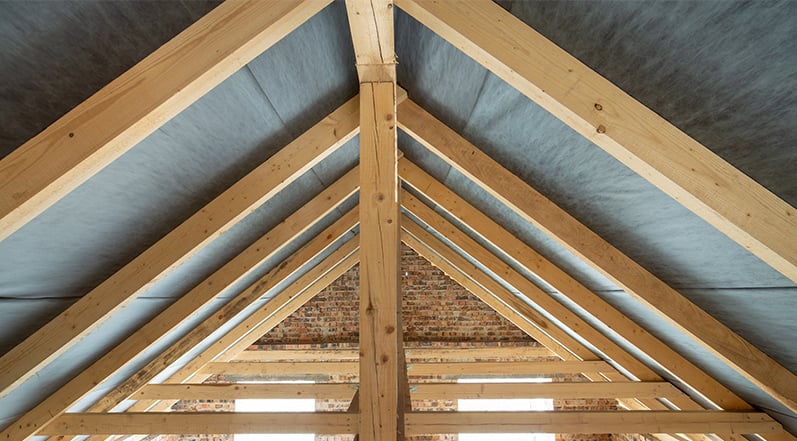
Beyond that, underlayment also provides another layer of insulation for your roofing system. It also helps provide a more level surface for shingles to be attached to, seals around your flashing, and an additional sound barrier on your home.
What Are the Different Types of Roof Underlayment?
Felt, synthetic, and rubberized asphalt are the three primary types of roof underlayment that people will need to choose from when replacing a residential roof.
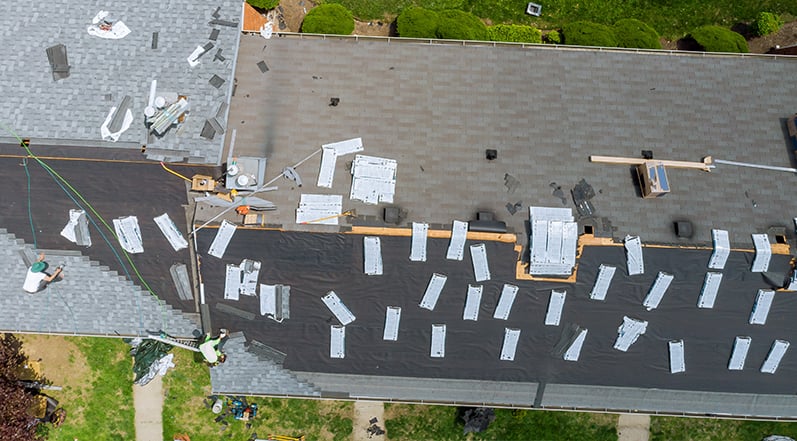
Let’s take a closer look at each one to help you make the right decision for your home.
Felt Underlayment
Felt is one of the oldest types of underlayments for roofing systems. You’ll also hear it called felt paper or tar paper.
Composed of an organic paper or mat that has been completely saturated with asphalt, there are typically two standard weights of felt underlayment: 15 pounds per hundred square feet and 30 pounds per hundred square feet. These are referred to as No. 15 felt and No. 30 felt.

Number 15 felt can be an acceptable choice for lightweight projects, but this material does tear easily. Beyond that, it’s important that it doesn’t get left exposed to the elements during the installation process, as it can end up absorbing water and wrinkling if it gets wet.
Contractors will often recommend No. 30 felt when homeowners choose felt underlayment over the other options due to its durability. Different contractors tend to have preferred underlayment types that they prefer to work with, and the prevalence of a certain type can depend on your region of the country.
Synthetic
Synthetic underlayment has become an increasingly popular choice over the last ten years or so, thanks to a number of advantages offered by this improvement upon felt underlayment.
In most cases, synthetic underlayment is made of several layers of polymers woven together. However, the specific materials used will vary depending on the manufacturer of the product.

Compared to other available types of underlayment, synthetic underlayment offers a number of benefits, including:
- ● Durability, toughness, and tear-resistance
- ● Creating a secure walking surface
- ● Allowing more coverage per roll due to lighter weight reduces the number of ladder trips for contractors
- ● Ability to repel water and resistance to mold
- ● The presence of overlap guides and clear lines make installation faster and easier
Rubberized Asphalt Underlayment
Also known as self-adhered underlayment, rubberized asphalt underlayment is typically composed of asphalt and rubber polymers. Though this is one of the most expensive types of underlayment, it’s important to understand that this material can either be used as the primary underlayment material or only used on your roof in areas where water leaks are likely to occur. This is the option to go with if you are looking for premium roof protection and leak prevention, particularly if your home is in an area that experiences extreme temperatures.
This type of underlayment has a stick back right on it, allowing the material to adhere to the roof deck and creating a waterproof seal.
Rubberized or self-adhered underlayment is designed to help offer protection for the roof from damage where penetration in the roof deck exists and where water typically collects.

Some of the areas that are prone to leaks that can be protected using this type of underlayment include:
- ● Vents
- ● Valleys
- ● Eaves
- ● Skylights
- ● Chimneys
This type of underlayment can be particularly useful in places that experience harsh winters.
The top side of rubberized underlayment can contain polyester, polyethylene, or granulated materials in order to provide additional weather resistance. The surface is also non-skid, meaning it’s easier for roofers to walk on and, therefore, safer to install than other kinds of underlayment.
Another benefit of rubberized asphalt underlayment is that it can shrink and stretch without breaking or cracking, which is a great feature in places that experience a lot of temperature fluctuation.
The Pros and Cons of Each Type of Underlayment
You’ll likely find that the roofing contractor you choose for your roofing job has a preferred type of underlayment they tend to use, but that doesn’t mean you don’t have any say in the matter. Each underlayment type has pros and cons, and it’s worth weighing them out to help you understand what will work best for your needs and best fit within your budget.
Felt Underlayment
Felt underlayment has been around for a long time, and there are a number of reasons why it has been used for so many years, between the roof decking and shingles on houses.
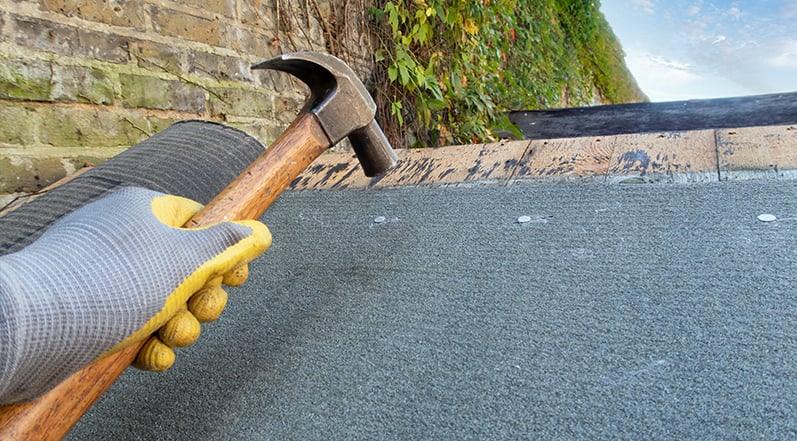
Some of the benefits include:
- ● Cost-effective: This is typically one of the less expensive underlayment options on the market
- ● Good moisture resistance: Felt underlayment helps to provide a reliable barrier against water infiltration
On the other hand, there are some pretty good reasons that homeowners and contractors alike have been moving away from felt underlayment and toward synthetic underlayment. Some of the downsides of using felt include:
- ● If the material gets wet during installation, it can wrinkle in such a way that the shingles aren’t able to lay flat
- ● Its heavier weight and slippery nature make it more cumbersome to handle
- ● Its heavier weight also means that there is less material per roll, meaning there are more seams and more trips to the ladder for contractors
- ● Some roofing warranties specifically state that synthetic underlayments are necessary for coverage
- ● Felt is prone to tearing during installation and in high winds
Synthetic Underlayment
Synthetic underlayments are becoming more and more popular, and for good reason.
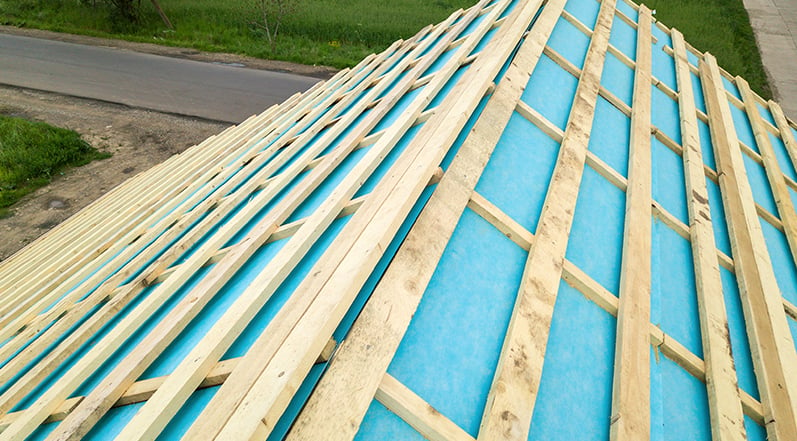
Here are some of the benefits of this type of underlayment:
- ● Tougher and more durable than felt
- ● Lasts longer than felt
- ● Thinner and lighter than other options, meaning that you get more coverage per roll
- ● More tear and damage resistant than felt, meaning that it’s less likely to get damaged as a part of the installation process
- ● Can withstand up to six months of exposure before it starts to break down (though this will vary depending on the product)
- ● The lightweight nature makes it easier to install
- ● Often has a non-slip coating that makes it easier to install
- ● Provides additional protection for your home from water if you lose shingles
The major downside of a synthetic underlayment, when compared to felt, is the cost. Though it is more expensive, many feel that the added durability, protection, and longevity are worth it.
Rubberized Asphalt Underlayment
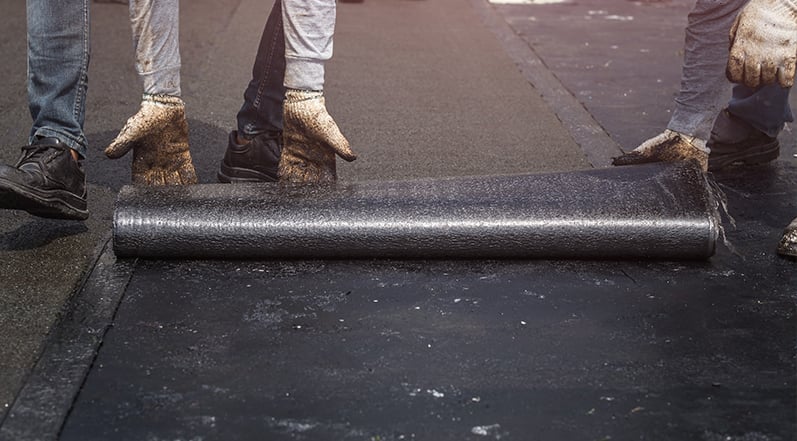
There are a number of benefits to rubberized asphalt underlayment, including:
- ● Most are peel-and-stick, allowing for relatively easy installation
- ● Most rubberized asphalt products will self-seal around staples and nails
- ● Great at protecting the roof from water damage
- ● More heat resistant than felt underlayment
- ● Longer lasting than felt underlayment
- ● Can be left exposed to the elements for 90 to 180 days if there is a delay in installing the primary roof covering
- ● Good choice for low-slope roofs
Like synthetic underlayments, the cost is the primary drawback of rubberized asphalt underlayments. Since it’s quite a bit thicker than other underlayment options, there isn’t nearly as much coverage offered per roll.
Choosing the Right Underlayment For You
Even once you’ve acquired a lot more knowledge about the different types of underlayment, it can feel difficult to know which option is right. Is it worth paying more for synthetic or rubberized asphalt underlayment, or will the more cost-effective felt underlayment be sufficient for your needs?
When choosing your underlayment, you’ll want to consider several factors, including climate, water resistance, durability, top roof layer material, and cost.
For example, let’s say you live in a region where the temperatures remain relatively stable throughout the year. You might find that asphalt-saturated felt roofing underlayment is the right choice for your home. However, in places that experience extreme temperature changes, you might decide that rubberized asphalt roofing is worth the higher price tag.
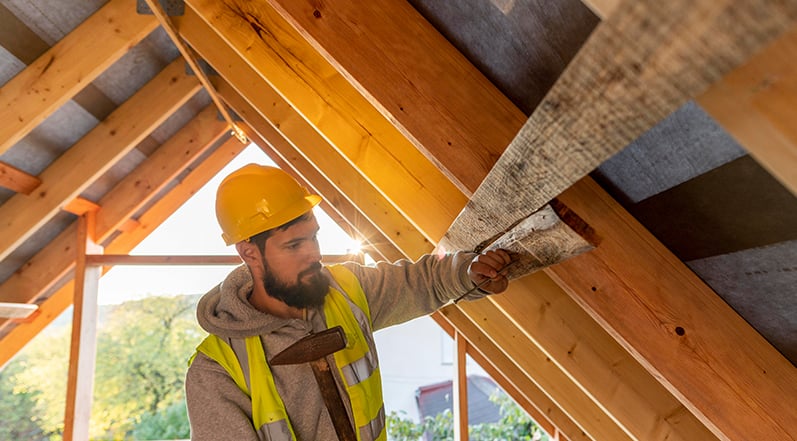
When it comes to your roofing material, either felt underlayment or rubberized asphalt tends to be the go-to choices for asphalt roofs. Both of these options are also suitable for slate shingles.
However, if you are interested in investing in a metal roof, synthetic roof underlayment is likely the best choice because of its heat resistance.
Ultimately, if your priorities are tear-resistance and durability, a synthetic roof underlayment is a good choice, while you can spend a bit more on rubberized asphalt underlayment if you want to prioritize waterproofing.
In terms of price, felt underlayment is going to be the most affordable, with synthetic underlayment being the mid-range option and rubberized asphalt coming in as the most expensive.
As a final consideration, it’s a good idea to look at your local building codes to make sure there aren’t any rules or regulations about the type of underlayment you use and your top layer roofing material. The last thing you want is to invest in a new roof only to find that it violates the building codes in your area.
How Much More Expensive Is Synthetic Underlayment Than Felt Underlayment?
We’ve noted a few times in this article that one of the major benefits of felt underlayment is that it is cost-effective and that one of the only major drawbacks of synthetic underlayment is the fact that it’s more expensive than felt.
At this point, you’re likely wondering how much more expensive it is.
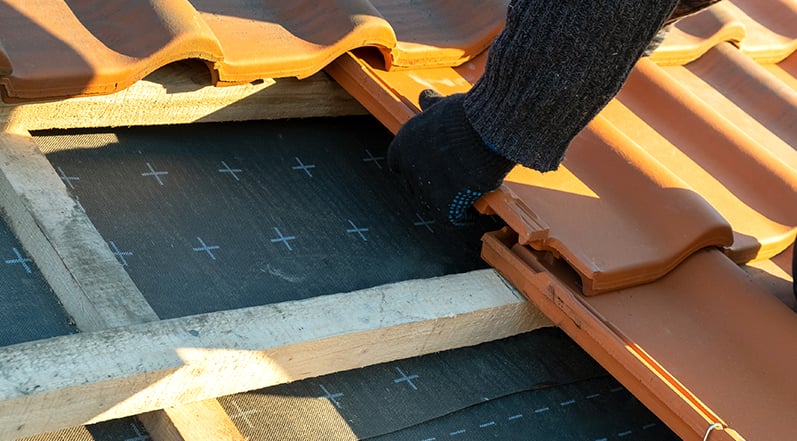
There are, of course, going to be a range of prices for both of these most popular types of underlayment depending on the manufacturer you choose, your location, and the quality of the product.
That being said, synthetic underlayment can be anywhere from two to five times more expensive than felt underlayment per roll, but it’s important to remember that synthetic underlayment is lighter, and each roll provides more material.
You can generally assume that synthetic underlayment will cost 30% to 40% more than felt paper. However, synthetic underlayments can last twenty-five years or more, while felt underlayment is commonly rated to last somewhere between twelve and twenty years.
Are You Looking For the Best Roofers in Atlanta?
When it’s time for a new roof, it’s easy to be overwhelmed by the many different decisions you have to make. You don’t just have to think about the material you want to use for your new roof, but you’ll also need to determine a budget that works for you and consider which type of roof underlayment you’d like to use.
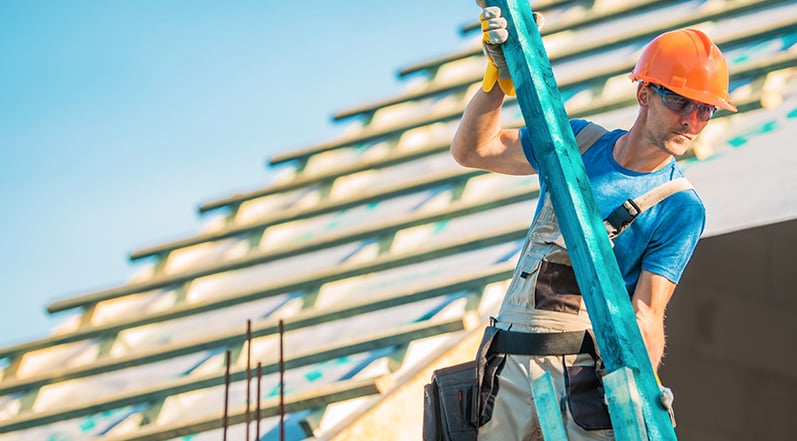
If you live in the Atlanta area, though, one big decision is easy to make– which roofing contractors to hire. At Colony Roofers, our hand-picked team of hardworking and highly skilled roofers can handle any roofing job you throw at them with a smile on their faces. Specializing in the highest quality roofs for the most affordable prices in the Atlanta area, we strive to ensure that every single one of our customers has a great experience working with us.
Whether you’re thinking about replacing your roof or you’re in need of a few small repairs, contact us today to schedule a free estimate.
 Call (678) 365-3138
Call (678) 365-3138

